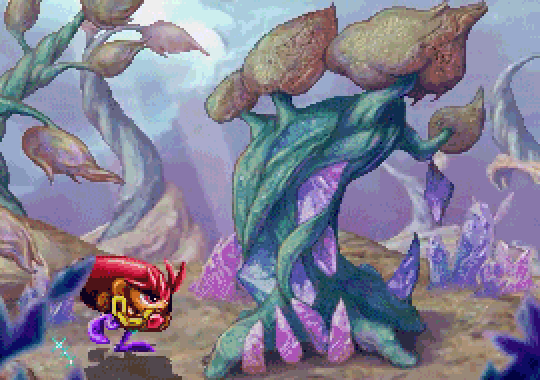Text

Snake
14 notes
·
View notes
Text

Sora
18 notes
·
View notes
Text

'Her Majesty led this strange orchestra' by Rosina Emmet Sherwood, 1888.
6K notes
·
View notes
Text
Two Etruscan men dancing, detail of a fresco painted on the walls of a tomb, c. 470 BC, found near Tarquinia, Italy in 1830.

134 notes
·
View notes
Text



Green Zelder,
Mean Zelder,
They will kiss for Queen Zelder
Oughnv
0 notes
Text
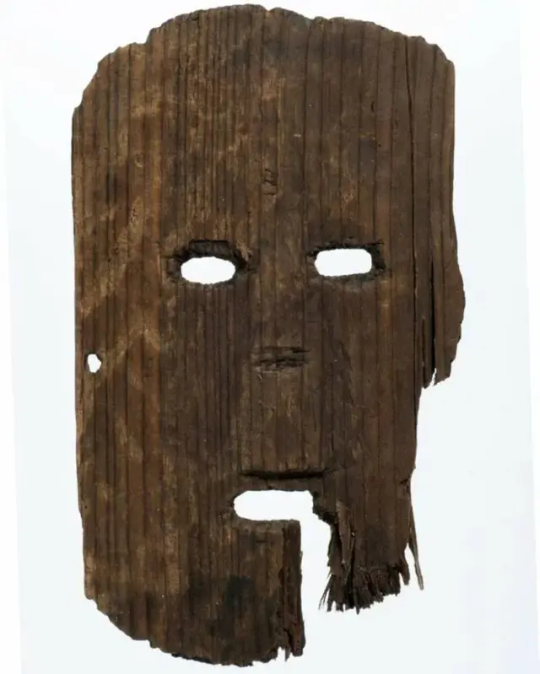
Yayoi period between 300 B.C.E. and 300 C.E., Osaka Center for Cultural Heritage
93 notes
·
View notes
Text
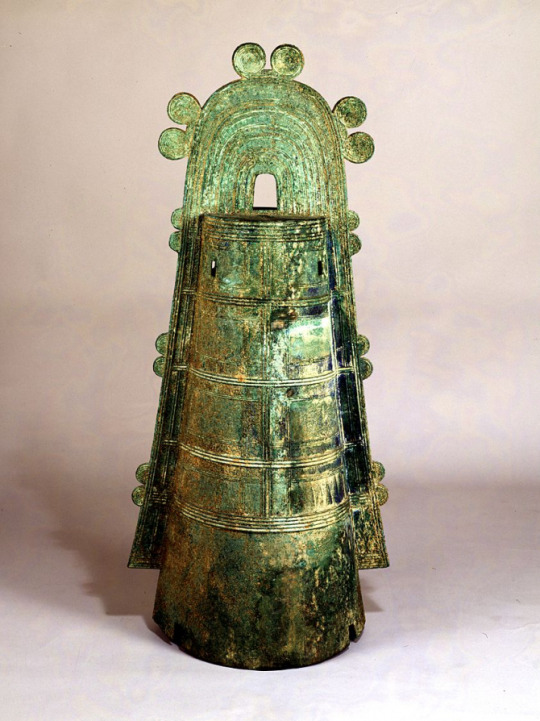
Bronze bell, Japan, Yayoi Period, 1st-3rd century AD
from The Tokyo National Museum
763 notes
·
View notes
Text

Cinerary urn, Etruscan, late 3rd century BC
from The Museum of Fine Arts Boston
1K notes
·
View notes
Text

Small Etruscan lion-shaped flask (so-called askos), thought to be a production of a workshop in Clusium (Chiusi) and discovered in a tomb in Vulci.
185 notes
·
View notes
Text

Imagine if you will, being a dying Egyptian lady. I mean not dying right now but soon to be dead. As such you arrange your burial with the local priest of the mortuary cult and the various officiants present you with the furniture for the grave, the sarcophagus and all that stuff. Money is tight so you agree to use recycled linen to be used as mummy material and they present you that shit.
That shit is the single existing liber linteus to date. It's a book, not an Egyptian one, but an Etruscan one from Italy. Not much is known about the book, if not that is some sort of sacred calendar. We (arguably) don't know much about the Etruscan language, being this one the longest text we have found to date, translation is not the easiest task. Nevertheless this find was extraordinary.
Now what I truly find interesting is not the book per se (that's not true I find it very interesting) but the fact that a mummy was bandaged in it. Considering the fact that Egyptians' belief attributed an immense power to written words, why this lady agreed to be mummified in a damn book with lots of foreign words on it?
One could argue that, given the dates, this lady was factually Egyptian, but more Hellenistic than anything. Or that she was poor AF and had to get whatever she could get to be mummified properly. I also heard somewhere that she might have not seen the writing upon the linen sheet because it would have been whitened before using it. Sadly, since we don't know shit about the mummy, because it was for sure legitimately excavated with incredible legitimacy and care, we will never know.
What I like to think instead is that the local embalmer just successfully bullshited this lady.
- What are those symbols on the sheet?
- Just some writings, don't think about them
- And what do they say?
- Good things about the mummy and the afterlife
- Wdym? Are those magical words?
- It's a good fortune enchantment
- I don't recognise the language
- it's Roman (????)
- Wtf Is a Roman???
Absolute comedy
98 notes
·
View notes
Text
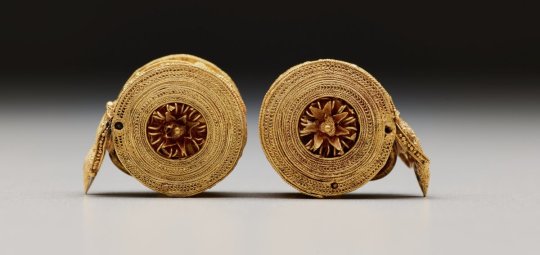
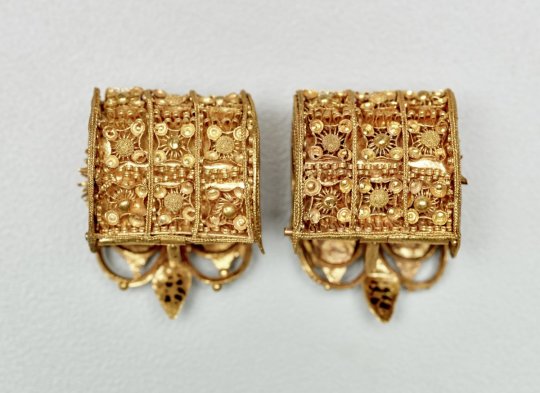
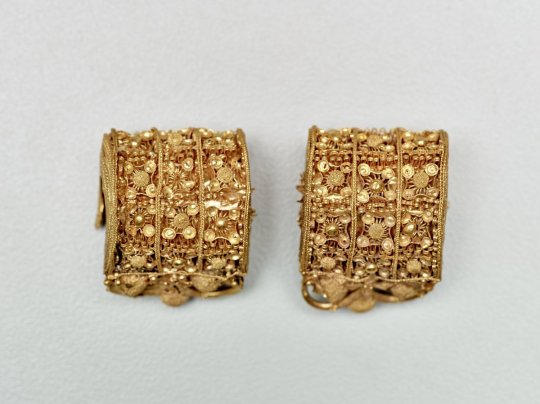
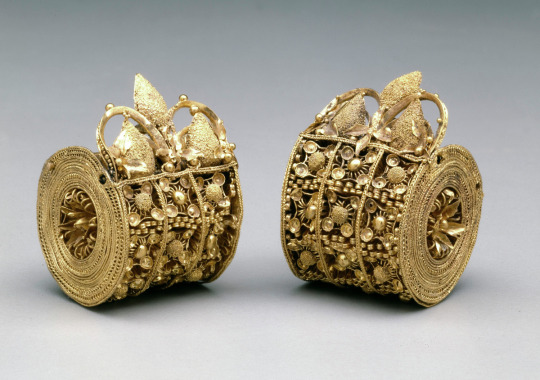

~ Pair of bauletto earrings.
Culture: Etruscan
Date: 6th century B.C.
Medium: Gold
2K notes
·
View notes
